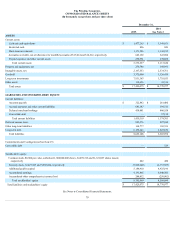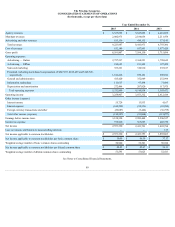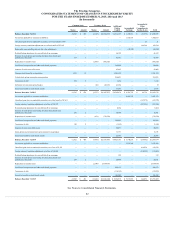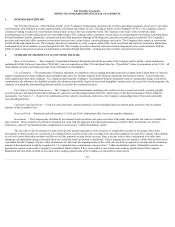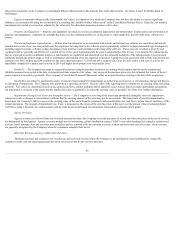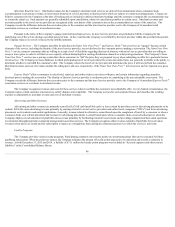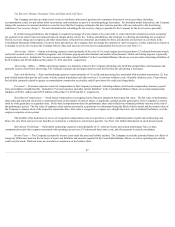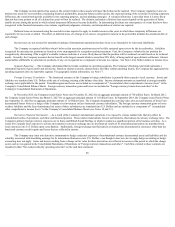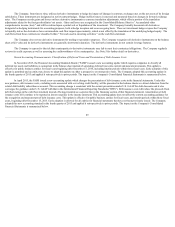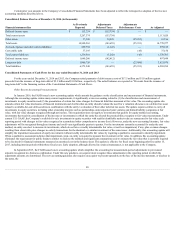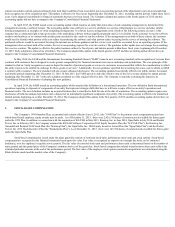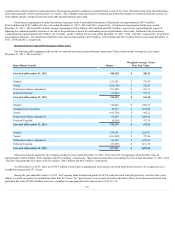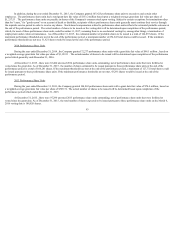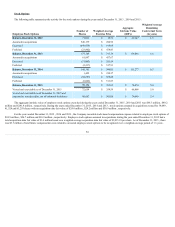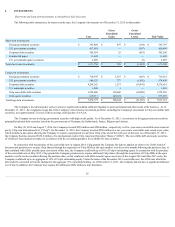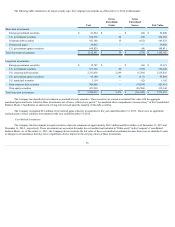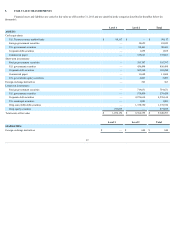Priceline 2015 Annual Report Download - page 92
Download and view the complete annual report
Please find page 92 of the 2015 Priceline annual report below. You can navigate through the pages in the report by either clicking on the pages listed below, or by using the keyword search tool below to find specific information within the annual report.
The Company records deferred tax assets to the extent it believes these assets will more likely than not be realized. The Company regularly reviews its
deferred tax assets for recoverability considering historical profitability, projected future taxable income, the expected timing of the reversals of existing temporary
differences, the carryforward periods available for tax reporting purposes, and tax planning strategies. A valuation allowance is provided when it is more likely
than not that some portion or all of a deferred tax asset will not be realized. The ultimate realization of deferred tax assets depends on the generation of future
taxable income during the period in which related temporary differences become deductible. In determining the future tax consequences of events that have been
recognized in the financial statements or tax returns, significant judgments, estimates, and interpretation of statutes are required.
Deferred taxes are measured using the enacted tax rates expected to apply to taxable income in the years in which those temporary differences are
expected to be recovered or settled. The effect on deferred taxes of a change in tax rates is recognized in income in the period that includes the enactment date of
such change.
Income taxes are not accrued for unremitted earnings of international operations that have been or are intended to be reinvested indefinitely.
The Company recognizes liabilities when it believes that uncertain positions may not be fully sustained upon review by the tax authorities. Liabilities
recognized for uncertain tax positions are based on a two step approach for recognition and measurement. First, the Company evaluates the tax position for
recognition by determining if the weight of available evidence indicates it is more likely than not that the position will be sustained on audit based on its technical
merits. Secondly, the Company measures the tax benefit as the largest amount which is more than 50% likely of being realized upon ultimate settlement. Interest
and penalties attributable to uncertain tax positions, if any, are recognized as a component of income tax expense. See Note 14 for further details on income taxes.
Segment Reporting — The Company determined that its brands constitute its operating segments. The Company's Booking.com brand represents a
substantial majority of gross profit and net income. Based on similar economic characteristics and other similar operating factors, the Company has aggregated the
operating segments into one reportable segment. For geographic related information, see Note 17 .
Foreign Currency Translation — The functional currency of the Company's foreign subsidiaries is generally their respective local currency. Assets and
liabilities are translated into U.S. Dollars at the rate of exchange existing at the balance sheet date. Income statement amounts are translated at average monthly
exchange rates applicable for the period. Translation gains and losses are included as a component of " Accumulated other comprehensive income (loss) " in the
Company's Consolidated Balance Sheets. Foreign currency transaction gains and losses are included in "Foreign currency transactions and other" in the
Company's Consolidated Statements of Operations.
In November 2015, the Company issued Senior Notes due November 25, 2022 for an aggregate principal amount of 750 million Euros. In March 2015,
the Company issued Senior Notes due March 3, 2027 for an aggregate principal amount of 1.0 billion Euros. In September 2014, the Company issued Senior Notes
due September 23, 2024 for an aggregate principal amount of 1.0 billion Euros. The Company designated the carrying value, plus accrued interest, of these Euro-
denominated Senior Notes as a hedge of the Company's net investment in Euro functional currency subsidiaries. The foreign currency transaction gains or losses
on these liabilities and the Euro-denominated net assets of these subsidiaries are translated into U.S. Dollars and are included as a component of " Accumulated
other comprehensive income (loss) " in the Company's Consolidated Balance Sheets (see Notes 10 and 13 ).
Derivative Financial Instruments — As a result of the Company's international operations, it is exposed to various market risks that may affect its
consolidated results of operations, cash flow and financial position. These market risks include, but are not limited to, fluctuations in currency exchange rates. The
Company's primary foreign currency exposures are in Euros and British Pound Sterling, in which it conducts a significant portion of its business activities. As a
result, the Company faces exposure to adverse movements in currency exchange rates as the financial results of its international operations are translated from
local currencies into U.S. Dollars upon consolidation. Additionally, foreign exchange rate fluctuations on transactions denominated in currencies other than the
functional currency result in gains and losses that are reflected in income.
The Company may enter into derivative instruments to hedge certain net exposures of nonfunctional currency denominated assets and liabilities and the
volatility associated with translating earnings for its international businesses into U.S. Dollars, even though it does not elect to apply hedge accounting or hedge
accounting does not apply. Gains and losses resulting from a change in fair value for these derivatives are reflected in income in the period in which the change
occurs and are recognized in the Consolidated Statements of Operations in "Foreign currency transactions and other." Cash flows related to these contracts are
classified within "Net cash provided by operating activities" on the cash flow statement.
88


